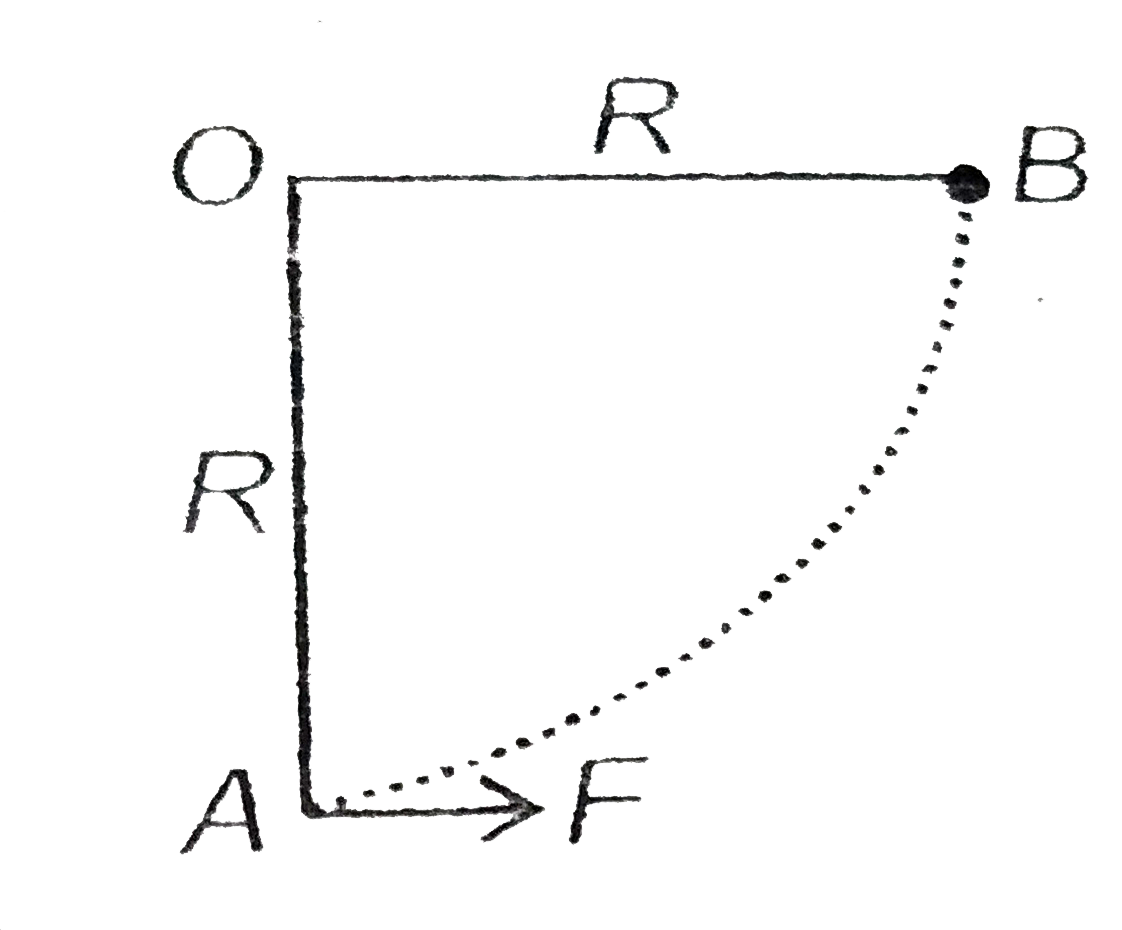Figure. A smooth circular path of radius R on the horizontal plane which is quarter of a circle A block of mass m is taken from position A to B under the action of a constant force F. Calculate the work done by force F.
a. If it is always directed horizontally
b. If the block is pulled by a force F which is always tangential to the surface
c. Block is pulled with a constant force F which is always directed towards the point B
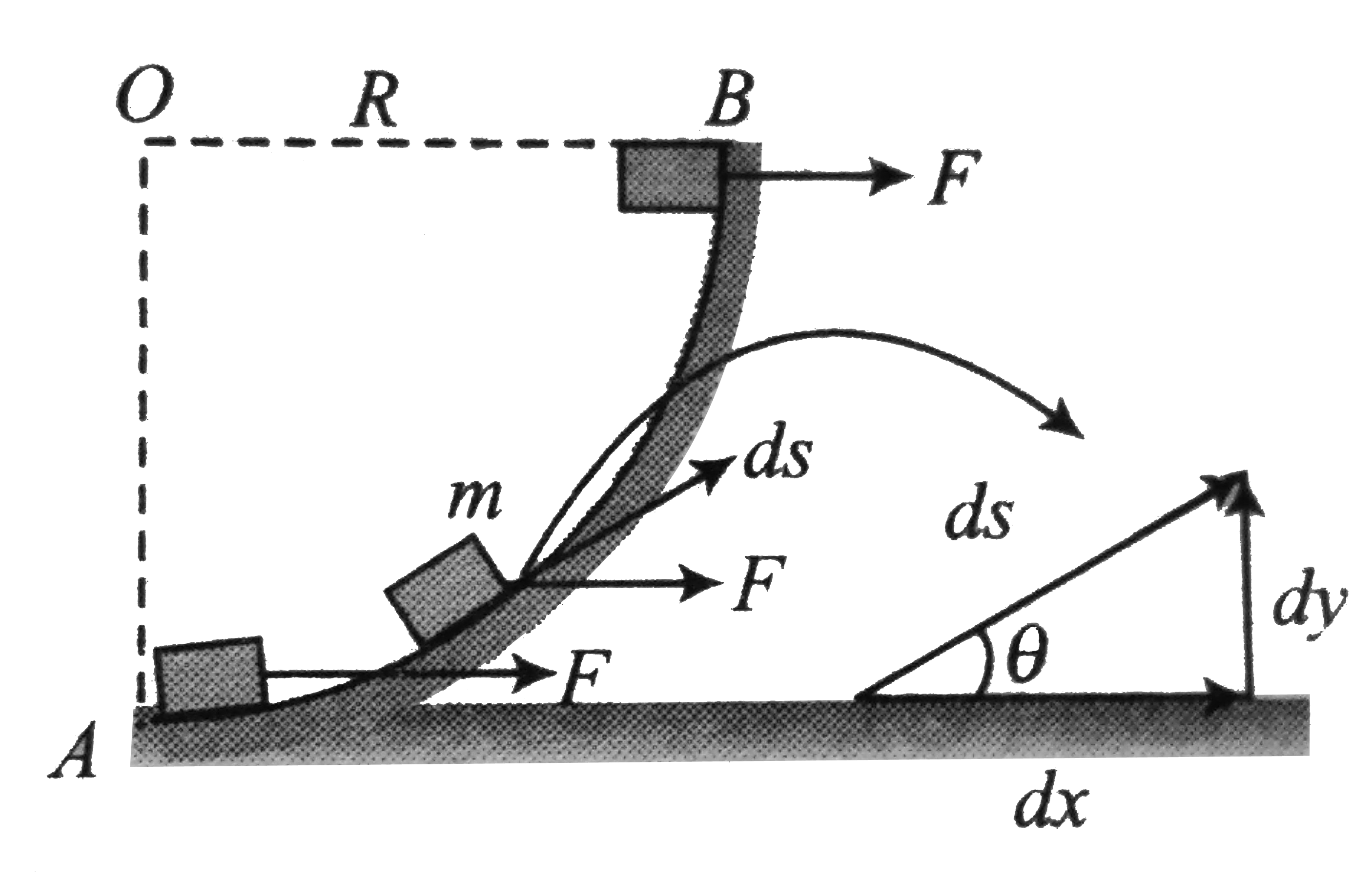
a. WR=∫→F⋅d→S=∫Fdscosθ
or W=R∫0Fdx=FR
As the block moves from A to B, the displacement of the block in the direction of force is equal to radius R.
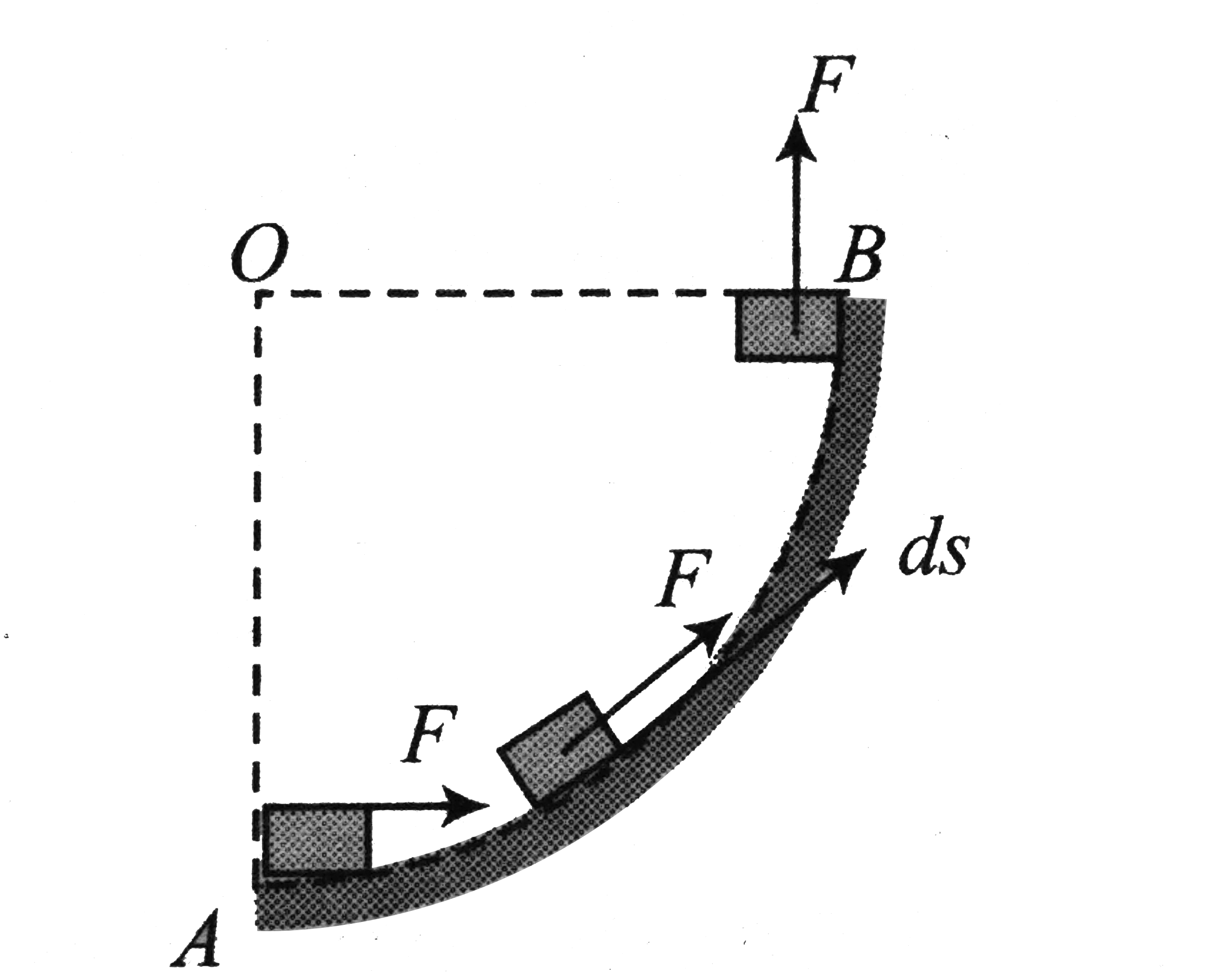
Therefore, the work by the constant force F is W=FR.
b. If the block is pulled by a force F which is always tangential to the surface, in this case, force and displacement are always parallel to each other. The displacement of the block in the direction of force is π2R.
Thus, the work done by the force is
W=F(πR2)=π2FR
c. Block is pulled with a constant force F which is always directed towards the point B. In this case, angle between force vector and displacement vector is varying.
In figure the angle between →F and d→S is θ. Block is at angle α from vertical The magnitude of ds is R. dα The relation between θ and α is

(π4+α2)+θ=π2
∴θ=π2−α2
Thus, dW=→Fd→s=Fdscosθ=F(Rdα)cos(π4−α2)
or dW=FR√2(cosα2+sinα2)dα
=FR√2⎛⎜⎝π/2∫0cosα2dα+π/2∫0sinα2dα⎞⎟⎠
or W=FR√2
Topper's Solved these Questions
- BOOK - CENGAGE PHYSICSCHAPTER - WORK, POWER & ENERGYEXERCISE - Exercise 8.125videos
WORK, POWER & ENERGY
- BOOK - CENGAGE PHYSICSCHAPTER - WORK, POWER & ENERGYEXERCISE - Exercise 8.225videos
WORK, POWER & ENERGY
- BOOK - CENGAGE PHYSICSCHAPTER - WORK, POWER & ENERGYEXERCISE - Archives (integer)4videos
WORK, POWER & ENERGY
- BOOK - CENGAGE PHYSICSCHAPTER - VECTORSEXERCISE - Exercise Multiple Correct5videos
VECTORS
Similar Questions
Knowledge Check
- Question 1 - Select One
A block of mass m is at rest under the action of force F against a wall as shown in figure. Which of the following statement is incorrect?
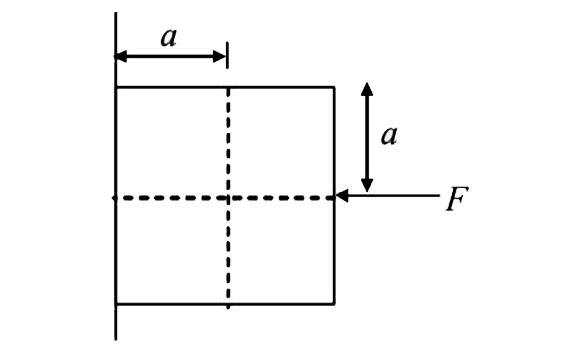 Af = mg[f friction force]BF = N [N normal force]CF will not produce torqueDN will not produce torque
Af = mg[f friction force]BF = N [N normal force]CF will not produce torqueDN will not produce torque - Question 2 - Select One
A block of mass m is at rest under the action of force F against a wall as shown in the figure. Which of the following statements is incorrect?
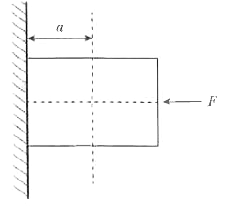 Af = mg (where f is frictional force)BF-N (where N is normal force)CNo net torque acts on the blockDN will not produce torque
Af = mg (where f is frictional force)BF-N (where N is normal force)CNo net torque acts on the blockDN will not produce torque - Question 3 - Select One
A horizontal force F acts on the block of mass m and the block remains stationary, thr value of friction force is.
 AμmgBμmg−FCFDzero
AμmgBμmg−FCFDzero
A block of mass m, lying on a smooth horizontal surface, is attached to a spring (of negligible mass) of spring constant k. The other end of the spring is fixed, as shown in the figure. The block is initally at rest in its equilibrium position. If now the block is pulled withe a constant force F, the maximum speed of the block is :
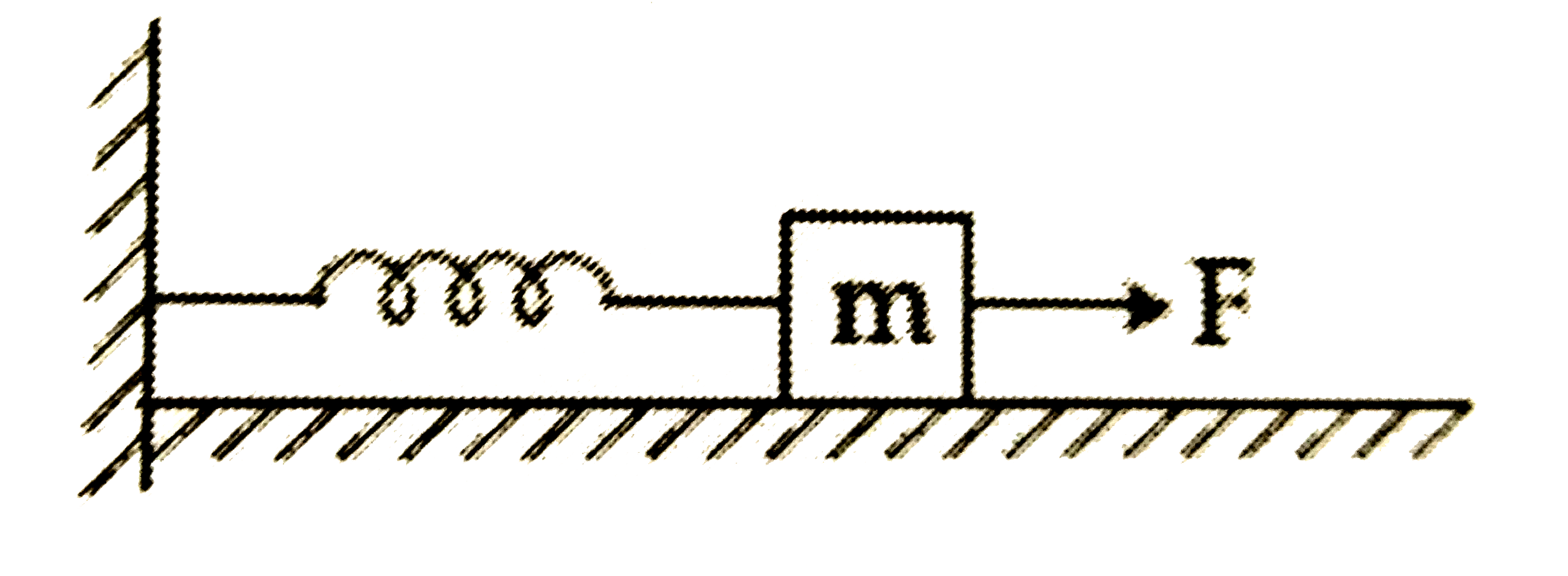 View Solution
View SolutionA block of mass m, lying on a smooth horizontal surface, is attached to a spring (of negligible mass) of spring constant k. The other end of the spring is fixed, as shown in the figure. The block is initally at rest in its equilibrium position. If now the block is pulled withe a constant force F, the maximum speed of the block is :
 View Solution
View SolutionTwo particle A & B each of mass m are in equilibrium in a vertical plane under action of a horizontal force F=mg on particle B, as shown in figure Then :
 View Solution
View SolutionA particle of mass M moves with constant speed along a circular path of radius r under the action of a force F. Its speed is
View SolutionA block of mass m is lying on horizontal surface of coefficient of friction μ. A force is applied to the block at an angle θ with the horizontal. The block will move with a minimum force F if
View Solution


